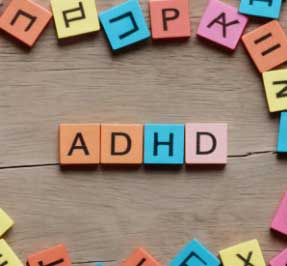written by Kayla Reno, BeMeBetter Intern & MSW Student
Kayla Reno is an intern and MSW (Master of Social Work) student, specializing in clinical therapeutic practices. She has a passion for healing, mental health, and supporting others. She sees the value in a holistic approach to wellness and combines her academic knowledge with hands-on experience as a reiki practitioner. Kayla’s commitment to growth and learning enables her to provide progressive, evidence-based interventions to clients. Through her work, Kayla strives to empower individuals on their unique journey toward healing, personal growth, and overall well-being.
Polyvagal Therapy
Polyvagal therapy, originated by Dr. Stephen Porges in 1994, is based on his experimentation involving the vagus nerve. Dr. Porges’ findings highlight the role that the autonomic nervous system plays in an individual’s physiological and psychological responses to stress and trauma. This blog post will discuss key principles of polyvagal therapy and polyvagal exercises to try at home.
What is Polyvagal therapy?
Polyvagal therapy is based on polyvagal theory. Polyvagal theory recognizes the role that our autonomic nervous system (ANS) plays in regulating a person’s psychological state. The ANS responds to stress in three different ways or three different levels:
- Sympathetic Nervous System: fight, flight, freeze, fawn
- Parasympathetic: rest & digest
- Social engagement: nerve activation which promotes social connection and communication
By understanding the ANS and its responses, one can increase their understanding of the emotional and physiological responses to stress. With this understanding, one can also build strategies and coping skills to regulate themselves effectively.
Key Principles of Polyvagal Therapy
Polyvagal Therapy is grounded in three key principles:
- Hierarchy of the ANS: The ANS has three states of being, which are: safe, mobilized, and immobilized. The safe state is when an individual feels secure and is open to social engagement and play. The mobilized state is a response to a perceived threat, also known as the fight/flight response. The immobilized state is a response to an extreme threat where an individual shuts down and cannot move or is “frozen.”
- Neuroception: A term coined by Dr. Porges which describes the way our ANS scans for cues of safety, danger, and life threats without involving the thinking parts of our brain. Neuroception can be faulty as a result of early life experiences or past traumas and send signals of danger when a person is safe or send signals of safety when a person is in danger. Faulty neuroception can cause hypervigilance as well as risky behavior.
- Co-regulation: This principle highlights the importance of healthy relationships and connections as individuals unconsciously send signals of safety or danger to one another. These factors play a critical role in regulating the ANS and providing feelings of safety and support. In polyvagal therapy, the provider creates a safe space (calm, warm, and responsive) for clients to experience co-regulation.
Polyvagal Exercises
- Closed exhalation: Begin breathing normally; then close the mouth, pinch the nose, and gently exhale through the closed airway for 15 to 20 seconds. This exercise causes pressure on the chest cavity which stimulates the vagus nerve.
- Applying cold water: Stepping into a cold shower/splashing cold water on the face can stimulate the vagus nerve, decrease SNS activity, and increase PNS activity.
- Vocalizations: Humming, singing, and gargling cause vibrations in the vocal cords and eardrums, directly stimulating the vagus nerve.
Summary
A growing body of research supports the connection between mind and body regarding an individual’s emotional well-being. Polyvagal therapy is a modality that supports the connection between mind and body and can have a profound impact on clients who utilize it. Polyvagal therapy highlights the interplay between physiological states, emotions, and social interactions.
If you are interested in polyvagal therapy and paving the way toward a more balanced and fulfilling life, contact BeMeBetter at 505-293-2881 or info@bemebetter.com. Alternatively, you can submit an inquiry for services on BeMeBetter’s “Contact Us” page or email a provider directly from the “Who We Are” page.
Resources:
- https://www.thepsychologylab.com/what-is-polyvagal-therapy
- https://thehumancondition.com/polyvagal-theory-exercises-benefits-examples/
- https://www.polyvagalinstitute.org/whatispolyvagaltheory#:~:text=3%20Key%20Principles%20of%20The,neuroception%2C%20and%20co%2Dregulation.



